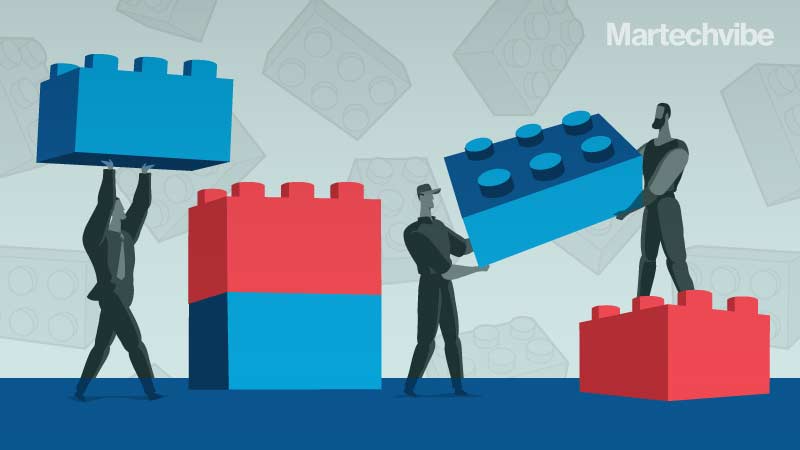Martech Spotlight: Lego
The iconic toy company is a serious business. Innovations and a customer-centric focus helped it become a superbrand. Did you know from its founding in 1932 until 1998, Lego had never posted a loss? In the late 90s, it struggled to compete for children’s attention, as they were over-engrossed in video games. In early 2000, […]
Topics

The iconic toy company is a serious business. Innovations and a customer-centric focus helped it become a superbrand. 
Did you know from its founding in 1932 until 1998, Lego had never posted a loss? In the late 90s, it struggled to compete for children’s attention, as they were over-engrossed in video games. In early 2000, the company refocused on its core product – the Lego brick. And the rest, as they say, is history. Its revival has been called the greatest turnaround in corporate history.
David Robertson’s Brick by Brick: How Lego Rewrote the Rules of Innovation has become a set business playbook for companies like Sony, Adidas and Boeing. What’s more, Google uses Lego bricks to help its employees innovate.
The toymaker skyrocketed into the digital age, becoming the most popular YouTube brand and releasing a movie that made nearly $500 million worldwide. During the lockdowns, Lego increased sales by more than a quarter in 2021, while profits jumped by almost a third as families turned to its plastic bricks for entertainment.
Brand strategies run deep. The Danish toy production company’s success is mainly because of its most valuable resource – its fans. It seeks out those who create the best content and turns them into certified creators for the brand.
We look at five key components that strengthen the brand:
Building an engaged community
A study has shown that a five per cent growth in retention can lead to 25 per cent growth in future profits. Not surprising that brands pursue growing customer engagements. Lego’s digital platform is about integrated customer experience and increasing brand awareness. Its social network app, Lego Life, engages children under 13 to share photos of what they made with Legos and leave comments. The community has a whopping 10 million members.
Its Lego Ideas platform not just helped recapture the toy market but has become an integral part of its creative process. Launched in 2008, Lego Ideas allows fans to submit new concepts for Lego sets, turning the best ideas into products for sale. A small share of revenues incentivises the fan designers. This community has grown to over a million users, more than 26,000 product ideas have been submitted, and twenty-eight sets have been produced.
In 2017, Maia Weinstock’s Women of NASA Lego idea garnered 10,000 votes, and it soon became a top-selling product on Amazon. With Lego Ideas and Lego Life, the company has been able to build a group devoted to developing ideas for new Lego sets.
Branching out, focussing on innovation
Merchandising can be a powerful tool that can help boost sales and improve brand recognition. Besides its multiple toy sets, Lego’s marketing strategy has been to branch out into various mediums to promote the brand. Raising the profiles of its properties while celebrating its philosophy of play is The Lego Movie franchise and The Lego Batman Movie.
Legoland theme parks have also been opened worldwide. The company also produced video games based on its product line and partnered with Disney and DC Comics to create its popular Star Wars and superhero-themed playsets, which are undoubtedly its vital marketing tools.
Meanwhile, after research by Geena Davis Institute on Gender in Media found attitudes to play and future careers remain unequal and restrictive, Lego removed gender stereotypes from its toys and developed its Lego Friends line aimed explicitly relatable to girls.
To build further awareness of their brand, the Danish toy company produced a reality TV show LEGO Masters that pits 12 pairs against each other in a series of block-building challenges.
Content is king
Lego has been developing branded content that takes an audience-first approach to business storytelling. It has built a loyal audience, mainly through multimedia storytelling. It creates and distributes content, similar to any media company in the toy space. Each Lego storyline has a dedicated microsite – Lego Star Wars and Lego Ninjago – that features plot and character explanations, online games, movies, polls and quizzes, and retail links. Interestingly, for each storyline release, Lego produces a serial-style film, for example, Lego Chima.
The well-known brand is known for its integrated and effective content marketing program. It’s hugely popular on Facebook – with over 13 million followers – as it regularly posts updates on new releases with videos and images. Its Instagram page offers similar content and has large user engagement. Better the engagement, the happier the customers are. Lego is also YouTube’s most popular brand channel, with over 10 billion views. Their channel offers promotional, educational, and how-to videos that promote the company’s brand.
Lego Click campaign integrates online networks, videos, and mobile technologies. Here fans share photos, ideas, and short videos, download apps, and explore Lego themes through online games and storylines.
Effective market segmentation
As they say, if you try to reach everyone with the same marketing strategy, chances are you won’t reach anyone. To get your messages right and make sales, you have to segment. Lego has done that successfully, categorising their customers based on purchase and usage rates – ranging from consumers who are highly involved with Lego products to those without experience with the brand. First is their lead users, who the toymaker actively engages with on product design; second is the community of people who have bought Lego and have also been to either a Lego shop or a Lego park, and the third segment is the people who have bought Lego in the last 12 months. The fourth segment is those who have only bought Lego once, and the fifth, the last, is those who have never bought any. The brand interacts most with the first three segments on social media because of their deeper involvement, co-creating products online, and encouraging them to be their most ardent advocates. It eagerly encourages and amplifies user-generated content from fans and considers them their greatest allies.
Digitalised products
Since it launched the Life Of George game in 2011, involving a physical Lego set and a mobile app to challenge kids to solve problems, the toymaker has bridged the gap between physical and digital worlds. A couple of years later, it rolled out Lego Fusion, a pilot project, to allow kids to use physical Lego brick designs in a digital game on mobile devices by scanning brick designs with the Lego Fusion app. The project led to the global rollout of Lego Dimensions, a sci-fi action-adventure video game. Here the players use Lego figures to accompany the use of video games.
The brand incorporated traditional Lego products into new toys, games, teaching tools, and scientific experiments. Involving passionate Lego consumers to develop new ideas, the approach to product development accelerated time to market. The standard product development involved idea generation, design, tests, and consumer engagement, but fan participation eliminated the need for some of those steps. More importantly, its online platform is used by consumers to engage and talk with each other about the brand and its products. Here lies the brand’s strength, which has increased on the back of digital technology.
If you liked reading this, you might like our other stories
Modernising Checkout Models Can Win Customers
Top 25 META Leaders Championing CX







